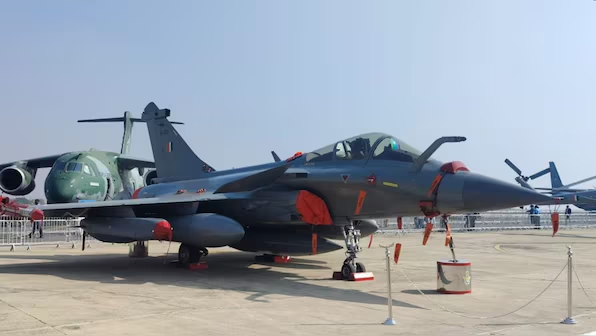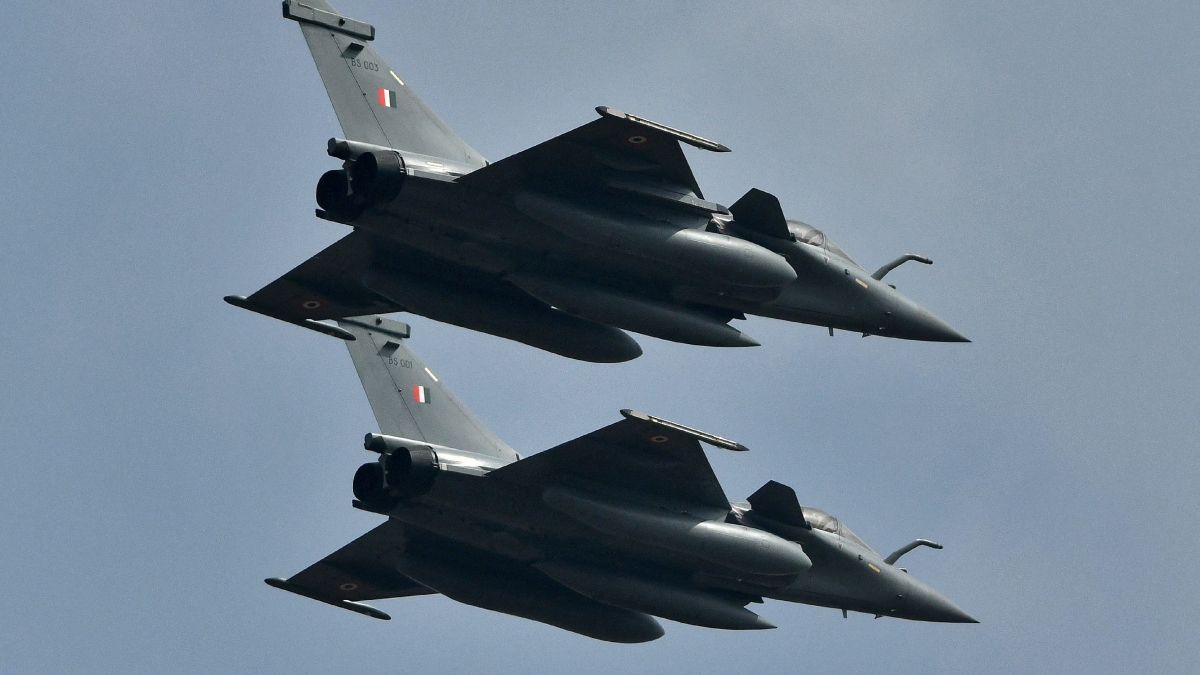
In the early hours of May 7, 2025, a storm brewed over the skies of South Asia as India launched a military operation targeting several locations across Pakistan. The operation, named Operation Sindoor, followed the tragic terrorist attack in Pahalgam, Kashmir, that claimed the lives of 26 Indian tourists. The Indian government quickly identified Pakistan-based terrorist outfits, such as Lashkar-e-Taiba and Jaish-e-Mohammed, as the masterminds behind the deadly assault. As tensions escalated, India’s response was swift, but the aftermath would ignite a series of claims, counterclaims, and propaganda, culminating in a heated war of words between the two neighboring nations.
Among the most contentious issues raised in the aftermath of the operation was the claim that Pakistan’s military had successfully shot down Indian Rafale fighter jets. Pakistan’s Inter-Services Public Relations (ISPR) and various media outlets went to great lengths to publicize these allegations, fuelling further tension in an already volatile situation. However, India’s response, via a detailed fact-check by the Press Information Bureau (PIB), quickly deconstructed these claims and brought the spotlight on the dangers of misinformation during military conflicts.
The Alleged Downing of Indian Rafale Jets
According to initial reports circulating on social media and broadcast outlets, Pakistan’s Air Force allegedly downed multiple Indian fighter jets, including the highly advanced Rafale aircraft, during Operation Sindoor. The reports claimed that the jets were targeted while performing bombing runs over key terrorist hideouts in Pakistan and Pakistan-administered Kashmir.
The narratives were bolstered by various images and video footage purportedly showcasing the wreckage of downed fighter jets. The images included a purported shot of a burning jet, allegedly belonging to the Indian Air Force, which was claimed to have crashed near Bahawalpur, a city in Pakistan’s Punjab province. Along with these images, videos were circulated showing attacks on Indian military installations, which were presented as evidence of Pakistan’s air superiority in the region.
The claims spread like wildfire, and many on social media were quick to jump to conclusions, believing that Pakistan had successfully struck a decisive blow against one of India’s most advanced weapons systems. Given the high stakes in such a conflict, the potential impact of these allegations could not be understated.
The Role of Misinformation in Conflicts
It is essential to understand the power of information, particularly in the digital age where news and images spread almost instantaneously. During times of military conflict, misinformation can be used as a tool of psychological warfare, creating confusion, panic, and misdirection among both civilian and military populations. In this context, the rapid circulation of false claims about the downing of Rafale jets could lead to misinterpretations of the situation and, in the worst-case scenario, escalate the conflict further.
Misinformation can destabilize not only the strategic environment on the ground but also the diplomatic process. It can lead to diplomatic standoffs and hinder efforts to resolve issues through peaceful negotiations. Given that both India and Pakistan are nuclear-armed countries, any misinformation that escalates tensions could carry catastrophic consequences, both regionally and globally.
In this case, the accusations from Pakistan of downing Rafale jets played a significant role in fanning the flames of hostility. The psychological impact of such claims cannot be overlooked, as they were designed to undermine India’s military capabilities while boosting national morale in Pakistan. However, as history has shown time and time again, allegations of this nature are often more about psychological warfare than factual reality.
India’s PIB Fact-Check
To counter the growing spread of misinformation, the Indian government swiftly acted through the Press Information Bureau (PIB) to provide clarity on the situation. The PIB is tasked with ensuring that accurate, reliable information reaches the public, and during times of crisis, its role becomes even more crucial. After conducting a thorough investigation, the PIB issued a comprehensive statement debunking the claims that Pakistan had shot down Indian Rafale jets during Operation Sindoor.
The PIB meticulously analyzed the images and video clips circulating in the media and quickly identified discrepancies. One of the first issues the PIB addressed was the image of a burning jet near Bahawalpur. According to PIB’s analysis, this image was an outdated photograph that had no connection to the recent operation. It was traced back to a 2019 incident in which an Indian fighter jet was involved in a crash, far removed from the events of Operation Sindoor.
Moreover, the video footage, which allegedly depicted an attack on the Srinagar Airbase, was proven to be a misrepresentation. The PIB revealed that the video was sourced from a violent sectarian clash in Pakistan’s Khyber Pakhtunkhwa province that occurred in 2024. Such inconsistencies clearly demonstrated the false nature of the claims circulating on social media and various Pakistani media outlets.
The PIB stressed that these fake reports were part of an ongoing misinformation campaign intended to manipulate the narrative surrounding the conflict. The fact-checking agency emphasized that the Indian Air Force continued to carry out its operations without any casualties, contrary to the claims being made by the Pakistani side.
The PIB’s clarification was essential in quelling the growing anxiety among the Indian public and restoring faith in the military’s actions. With the truth now out in the open, it was clear that the Pakistani media’s narrative had been a carefully orchestrated effort to undermine India’s efforts and sow discord among its people.
Propaganda and the Art of War
The misinformation campaign regarding the Rafale jets highlights the extent to which propaganda is used in modern warfare. In the 21st century, the battlefield is not only physical but also digital. While traditional warfare tactics—such as airstrikes and ground combat—continue to play a role in conflicts, the use of information as a weapon has become increasingly important.
Both India and Pakistan have long histories of using propaganda to influence both domestic and international perceptions of their military capabilities. In this case, Pakistan’s claims regarding the downing of Rafale jets served as a tool to not only enhance national pride but also create doubt about India’s military superiority.

By casting doubt on the effectiveness of India’s defense technology, Pakistan aimed to portray itself as a formidable opponent on the global stage. In a region where military strength is often a determinant of diplomatic leverage, such claims are meant to elevate the standing of Pakistan and challenge India’s dominant position in South Asia.
However, the rapid debunking of these claims by the Indian government has once again shown the importance of verification and truth in the age of misinformation. While propaganda may serve short-term goals, in the long run, it is the pursuit of truth that ensures a nation’s credibility on the world stage.
The Global Response
As the situation continued to unfold, the international community watched closely. The United Nations, as well as key global players like the United States, Russia, and China, expressed concern over the escalating tensions between India and Pakistan. Both countries are nuclear powers, and any military escalation carries the potential for catastrophic consequences not just for the two nations involved but for the entire region.
Diplomatic calls for restraint were issued, with global leaders urging both India and Pakistan to focus on de-escalating the situation and avoiding military confrontation. While the public rhetoric of both countries remained sharp, there were behind-the-scenes efforts to open dialogue channels and reduce the likelihood of further hostilities.
Despite these international efforts, the propaganda war continued to rage, with both nations positioning themselves as victims of the other’s aggression. As misinformation spread, it became clear that the only way to resolve the crisis would be through dialogue and transparency—qualities that were, at that moment, in short supply.
The Impact of Digital Misinformation
The incident underscores the power of digital media in shaping perceptions and influencing outcomes in modern conflicts. The rapid spread of misinformation on platforms like Twitter, Facebook, and YouTube can alter the trajectory of geopolitical events by sowing confusion and stirring nationalistic fervor.
The fact-checking efforts by the PIB were crucial in debunking false claims, but the damage had already been done. The misinformation had already sparked heated debates on social media, and for a brief period, many Indians were left questioning the safety of their military assets. It is a testament to the power of digital media that such a narrative, once established, is difficult to fully erase.
Conclusion
In the end, the allegations of Pakistan downing Indian Rafale jets during Operation Sindoor were proven to be unfounded. The Press Information Bureau’s diligent fact-checking process exposed the falsities spread by Pakistani media, reaffirming the importance of truth and verification in times of conflict. While misinformation campaigns can have short-term effects, in the long run, it is the pursuit of truth, transparency, and diplomacy that ensures lasting peace.
As the situation continues to unfold, both India and Pakistan must remain vigilant in their efforts to combat misinformation and work toward peaceful resolutions. In a world where the line between fact and fiction is often blurred, it is the responsibility of both governments and individuals to seek out the truth, especially during times of crisis.
In the digital age, where information moves faster than ever before, the battle for truth is just as important as the battle on the ground. The events surrounding Operation Sindoor serve as a stark reminder of this reality and the need for all to remain cautious in the face of misinformation.

